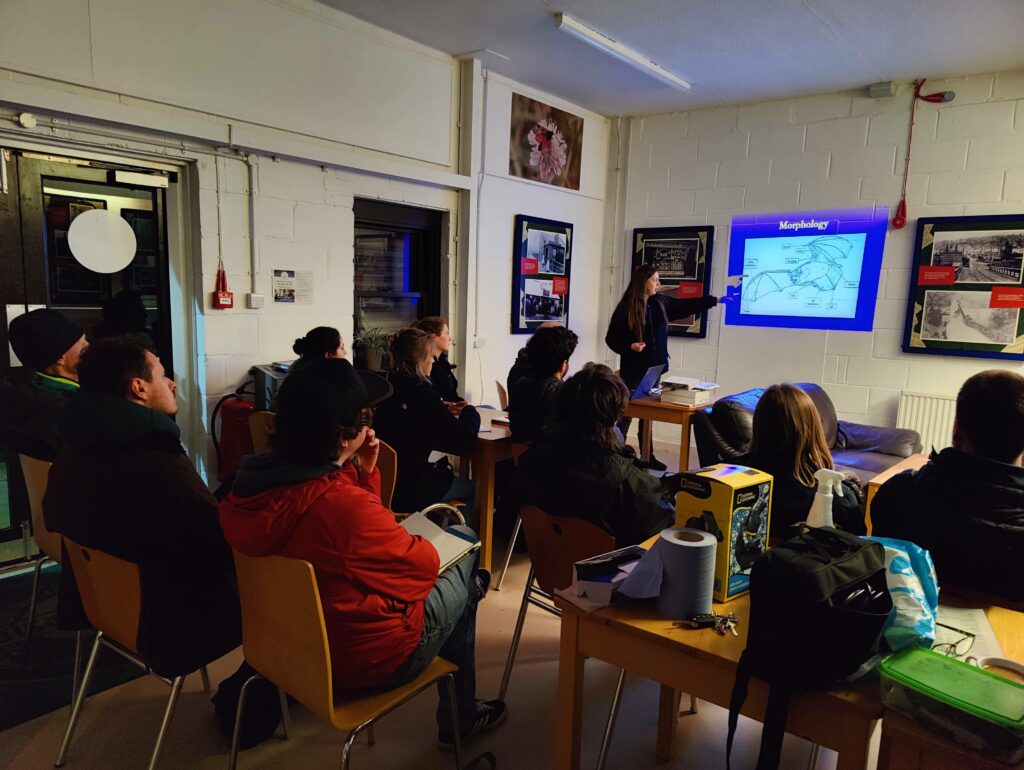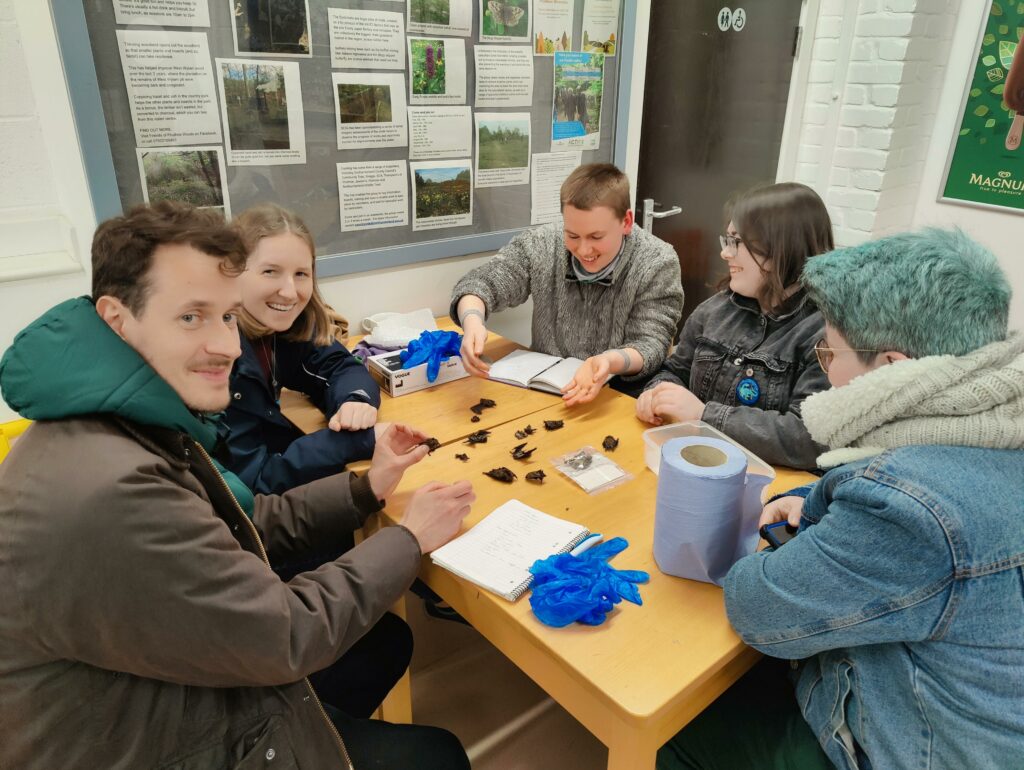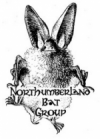The first talk of the year (9th March) kicked off with a well presented talk on bat identification by Sam Talbot. She was supposed to have been co-hosting this talk, but for various reasons became the sole presenter. However Nic did make a mad dash from Macclesfield over the M62 in the snow, to arrive on time to help out (or possibly hinder) with the projector and lap top set up.
By 7pm no one had arrived, so we assumed that the forecast for snow had put people off, but hooray – no, we suddenly had at least 12 people turn up by 7.10pm. The evening started off with a power point presentation on how to identify our local Northumbrian bat species, what the calcar looks like, as well as the tragus. Sam had a good variety of photos in the presentation… including hibernating bats, bats in the hand and bats in flight!

Once the power point presentation had finished, everyone broke in to three groups. Each group had a topic focus, then rotated every 10 minutes or so.
There were microscopes to look at bat poo, so you could see the insect wings, legs etc; a box of very desiccated bats, which allowed easy sight of the key identification features such as long tragus (brown long eared bat) or the calcar (pipistrelle species), pale tummy fur and whiskers (brandts or whiskered bat); finally we also had Graeme’s bat poo set in epoxy resin and labelled to species level – fascinating stuff.
Interesting what bat group members collect – especially those on the committee!

All in all a fun and informative evening was had. There was even coffee on offer, but everyone was so engrossed in looking at dead bats and poo, it was up to Nic and Sam to drink it all. A big thank you to Sam for giving the talk, Tina for writing it, Graeme for the bat poo, and everyone else for seeming to enjoy Nic’s collection of dead bats! 😉
Share this post!
